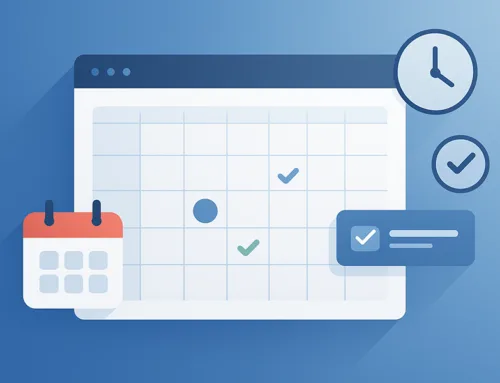Getting your blog to rank well is more than just luck
When it comes to your blog’s position within search engine results, there’s far more than just sheer luck at play.
Search Engine Optimisation is a skill that any content creator – professional or amateur – should develop in order to make their content as discoverable as possible. It involves making certain tweaks to your blog and its content in order to improve their position and visibility online.
While SEO and content marketing experts have developed specialist tools to launch your posts as far up the ranks as possible, there’s also a great deal of groundwork that you can do yourself for free. Here, I’ll provide a few useful tips to help you improve your blog content SEO.
Carefully Curate Your Posts
One of the most vital parts of SEO is to make sure that every piece of content you put out is worthwhile. It doesn’t matter how much technical optimisation you undertake if you’re not posting things that are unique, useful, accurate, relevant and up to date.
Don’t stray from your blog’s theme – however tempting it is to comment on developments in the world beyond your usual subject matter.
You should keep an eye on what’s going viral within your blog’s specialist field. Trending topics are far more likely to achieve hits – and providing a distinctive, expert angle on those topics will help you to stand out from other bloggers, so make sure that you research thoroughly!
Improve Both Readability and Accessibility
That’s the subject matter of your posts optimised – but what about your approach to the main body of text?
All the information you include in each post needs to be totally relevant and very concise. Try to avoid “filler language” wherever possible – that’s the fluff that bulks up your word count but doesn’t actually include any relevant information that moves the piece along.
Paragraphs should be no longer than three lines long. Remember, an online audience is more likely to be “scanning” your post for vital nuggets of information than studying it in great depth, so the readability of your content is vitally important.
Include headings which not only matches what users are searching for but also has a perfect word balance. Headline analyzer comes in pretty handy in optimising your post headings for search engines and social channels. Also include visually pleasing images and infographics where possible to break up the text and keep things interesting. Some fantastic tips on creating impressive infographics have been put together by the people at Visme.
Make sure you have permission to use all pictures before you add them!
Accessibility to your blog and across all your posts is a vital SEO step. Always link internally to content you’ve created in the past that is relevant to your current post’s subject matter. This improves access to more of your work for both audience members and search engines.
You should also link to your blog content regularly on your social media platforms, as this will increase traffic and inbound links – making you more discoverable still.
Before you post anything, however, you should first ensure that you are not duplicating content that already exists across your blog. If there are too many similar topics, keywords or repeated chunks of text, you may be penalised by search engines and sent way down the ranks.
Keep on Top of Trending Keywords
This area is perhaps one of the most famous elements of SEO and it’s also surprisingly easy to achieve.
There are a number of very useful free tools available that will help you discover exactly which keywords are the most popular within online searches. Again, it’s very important that all these search terms are completely relevant to the subject of your content.
Tools you may consider using include Ahrefs, SEM Rush and Google Adwords. But there are plenty more available. You might even use tools such as Answer The Public, Google search suggestions and Google Trends to pick out important keywords. Some will allow you to focus on particular countries – and even regions – meaning you can target a more local audience if required.
There are two main types of keyword phrases – short tail and long tail.
Short tail search terms are between one and three words long, and will help you to access a wide audience that is seeking out information falling roughly into the same field as your content. For example, “SEO tips” might be a high-performing short tail phrase for this page.
Long tail keyword phrases help you to zone in on a more specific audience by providing more detail of the subject matter. For example, “blog content SEO for beginners” will allow you to attract those who are looking for more specific types of information.
Long tail keywords are particularly valuable to those who are interested in content marketing for their blog, as they will help to draw in audiences that are far more likely to convert into sales leads.
Use keywords everywhere – in headings, subheadings, meta-descriptions and tags as well as in the main body of your content.
Whatever you do, be sure to insert those keywords in a way that is natural and easy to read. Stuffing a piece with jarring phrases that do not work together in a grammatical sense feels lazy and salesy and is often off-putting for an audience.
Before you create new posts that are properly keyword optimised, it’s definitely worth making the effort to re-optimise blog content from past pieces too – that way your whole blog will perform consistently.
So – to get off to a flying start when it comes to blog content SEO – remember to:
- Curate your posts, ensuring that they are relevant, unique and likely to draw an audience by keeping an eye on trends
- Hone the readability and accessibility of all content (remembering to regularly include internal links and do away with duplicate content)
- Keyword optimise in a natural, engaging way wherever possible
If you complete these steps, it’s highly likely that you’ll quickly see a difference in your blog’s search engine ranking.
This article was written by Tino Triste, Search Strategy Director at Tecmark.
Original post: 3 Ways to Optimise Blog Content so it Ranks Well on Google
Post courtesy of Daily Blog Tips
Author: Guest Author




